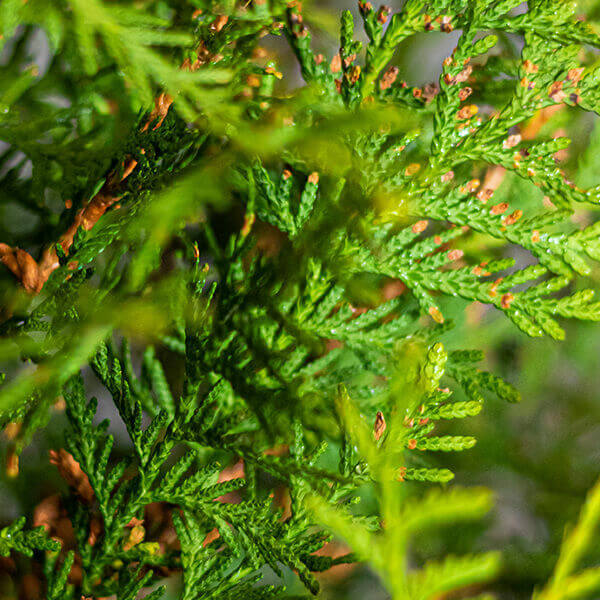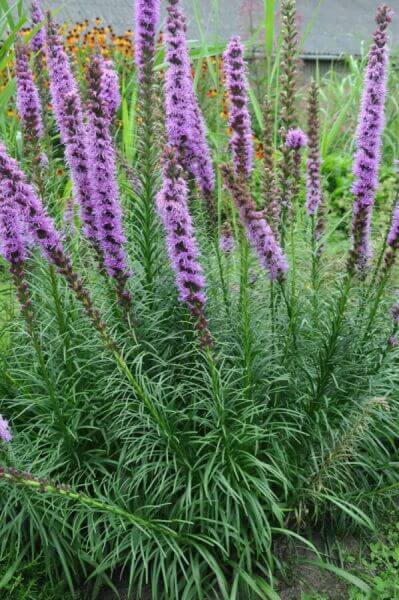Best Hedging Plants For School Grounds
Improve your garden's attraction with rich hedge varieties such as Yew (Taxus), Thuja, Laurel, Photinia, and Bamboo, commemorated for their structural integrity and ecological advantages.
Yew and Thuja supply evergreen protection and winter strength, while Laurel offers quick development and broad, fragrant leaves.
Photinia adds seasonal appeal with its dynamic red foliage, and Bamboo provides a low-maintenance, serene atmosphere.
These hedges enhance air quality, minimize sound, and develop tranquil, private areas.
Proper planting, spacing, and maintenance ensure energetic growth and eco-friendly harmony.
Explore how these rich ranges can raise your garden's appeal and well-being.
Secret Takeaways
Change Your Garden With Lush Hedge Varieties
- Select Yew for its thick, evergreen growth and unequaled durability.
- Opt for Laurel for its fast growth and broad leaves, making sure fast privacy.
- Pick Photinia for its lively seasonal foliage, which turns a striking dark red.
- Utilize Bamboo for a low-maintenance, winter-hardy hedge with aesthetic appeal.
- Space plants 2-3 per meter and prune routinely for ideal development and health.
Popular Hedge Plants
When transforming a garden with rich hedge ranges, it's vital to think about popular hedge plants such as Yew, Thuja, Laurel, and Photinia due to their unique qualities and benefits.
Yew (Taxus) is extremely esteemed for its longevity and dense, green growth, making it a prime option for sustaining landscapes.
Thuja is noted for its evergreen foliage and robust winter resilience.
Photinia adds seasonal vibrancy with red leaves that darken in time, producing dynamic visual appeal.
Laurel provides fast development and aromatic, broad leaves, suitable for fast personal privacy.
In Addition, Bamboo is an exceptional option for atmosphere, providing a low-maintenance, winter-hardy choice that boosts the garden's visual with its classy, swaying walking canes.
These choices accommodate a variety of horticultural needs and preferences.
Advantages of Garden Hedges
Garden hedges provide a wide variety of advantages, making them an important addition to any landscape. These natural barriers are cost-efficient to carry out and offer considerable wind defense, boosting air flow and contributing to noise decrease. The thick foliage of hedges like Thuja and Beech guarantees privacy by blocking exposure, developing a tranquil and remote environment.
Hedges also play an essential function in microclimate policy, offering a stable environment that fosters plant growth and reduces temperature changes. Their elaborate leaf structures filter pollutants, enhancing air quality and contributing to a much healthier garden ecosystem.
Additionally, hedges master sound decrease, absorbing and deflecting acoustic waves to lower ambient sound levels. This dual functionality of supplying both acoustic and visual privacy boosts the general tranquility and visual appeal of any garden.
Planting and Maintenance Tips
For an effective hedge, careful preparation of the planting location is essential. Guarantee the soil has proper pH and drainage to support strong root development.
Space the plants appropriately for the selected species. Water the hedge regularly during its preliminary development phase, changing as required with seasonal modifications.
Carry out a systematic insect control and disease avoidance strategy, utilizing organic or chemical treatments when required. Routinely check for aphids, mites, and fungal infections.
Apply mulch to maintain wetness and reduce weeds. Seasonal pruning promotes dense growth and air circulation, essential for plant health.
Following these guidelines will assist you cultivate a lively, well-maintained hedge that enhances the beauty of your garden.
Spacing and Trimming Guidelines
Spacing and Cutting Guidelines
Appropriate spacing and cutting are essential for cultivating healthy, aesthetically appealing hedges. Sufficient spacing guarantees each plant gets adequate nutrients, light, and airflow.
Follow these guidelines for optimum hedge maintenance:
- Spacing: Position hedge plants 2-3 plants per meter to encourage robust growth.
- Pruning Methods: Routine pruning is essential for maintaining desired hedge height and shape. Trim brand-new development in summer season and cut down older wood during winter.
- Seasonal Care: Adjust trimming methods and schedules according to seasonal requirements to ensure plant health.
- Hedge Height: Frequently display and cut to preserve the preferred hedge height and accomplish uniform looks.
Sticking to these steps will ensure your hedge flourishes, enhancing both the appeal and performance of your garden.
Selecting the Right Hedge
Choosing the Right Hedge
Selecting the proper hedge involves evaluating elements such as mature height, foliage density, and ecological strength. Effective hedge plant choice needs understanding each types' development qualities and site-specific versatility.
For example, Yew (Taxus) provides excellent durability and dense growth, while Thuja is notable for its winter season strength. Furthermore, thinking about maintenance requirements is crucial; fast-growing types like Laurel or Privet need regular trimming, whereas low-maintenance choices like Bamboo or Ivy might be more suitable for those seeking minimal upkeep.
Ecological factors such as soil type, light schedule, and moisture conditions need to also direct the selection process. This mindful approach ensures the picked hedges will flourish, supplying both aesthetic and functional advantages to the garden landscape.
Shipment and Planting Advice
To guarantee your hedge plants grow, they ought to be provided by specialized carriers and planted immediately upon arrival.
Follow these important actions for effective planting:
- Soil Preparation: Enhance the soil with raw material to enhance drainage and nutrient content.
- Planting Depth: Develop a trench two times the width and equal to the depth of the root ball.
- Watering Methods: Water thoroughly after planting, keeping the soil consistently damp however not saturated.
- Mulching: Apply a layer of mulch to maintain moisture and suppress weeds.
Customer Support and Service
Provided the crucial role of timely support in horticultural pursuits, our client assistance group is available six days a week through telephone, email, and social networks to use expert guidance and quickly resolve any issues. Their devotion to fast action times makes sure consumer satisfaction by dealing with queries connected to plant health, optimum planting methods, and maintenance schedules.

Response Time
----------------------
Within 24 hours
This comprehensive support group, reinforced by an outstanding 9.3/ 10 client ranking, highlights our dedication to enhancing the gardening experience for every client.
Often Asked Concerns
For How Long Does It Consider Hedge Plants to Develop?
Hedge plants normally need one to 3 years to end up being totally developed, with the specific period varying by types and growing conditions.
Efficient care throughout this vital duration is vital for robust development. Consistent watering, watchful weed control, and appropriate fertilizer application are pivotal in promoting strong root development.
For instance, fast-growing types like Laurel might develop quicker, while slower-growing varieties such as Yew might take longer. Thorough upkeep accelerates the establishment procedure, leading to healthy and thick hedges.
What Are the very best Hedge Plants for Personal Privacy?
The question of the very best hedge plants for personal privacy includes assessing evergreen and deciduous options.
Evergreen hedges like Thuja, Laurel, and Cypress provide year-round protection, guaranteeing continuous personal privacy.
On the other hand, deciduous hedges such as Beech provide seasonal privacy, shedding leaves in chillier months.
Key maintenance tips for personal privacy hedges consist of routine cutting, fertilizing in spring, and appropriate spacing-- normally 2 to 3 plants per meter.
Furthermore, constant watering and thorough weed removal are crucial for promoting healthy, thick development.
Can Hedge Plants Draw In Wildlife to My Garden?
Yes, hedge plants can draw in wildlife to your garden by offering necessary advantages like shelter, food, and nesting websites, consequently improving regional biodiversity. For circumstances, yew, holly, and laurel are excellent for bring in birds, while ivy supports a variety of pests.
However, it is very important to note that there are some downsides, such as increased maintenance to handle pests and routine maintenance. Carefully picking and maintaining hedge ranges can assist balance these drawbacks and advantages, ultimately promoting a lively and sustainable community in your garden.
Exist Any Flowering Hedge Plants Available?
Yes, there are flowering hedge plants offered that can boost the appeal of your garden.
For example, Elaeagnus, also understood as Olive Willow, produces aromatic white flowers in the fall, adding a touch of beauty.
Photinia, another popular option, showcases vibrant red leaves that mature into a rich green, developing a vibrant visual effect throughout the seasons.
To guarantee these plants grow, it's vital to practice appropriate pruning methods and seasonal upkeep, such as cutting new growth in the summertime and cutting back in the winter.
These procedures will assist preserve the health and visual appeal of your blooming hedges.
How Do I Prevent Insects in My Hedge Plants?
To avoid bugs in hedge plants, use natural pest control methods and maintain proper hedge care. Present helpful bugs like ladybugs, which take advantage of harmful bugs, to develop a balanced community.
Routinely examine your hedges for signs of infestation and without delay get rid of any afflicted parts to avoid the spread. Guarantee the health of your hedges by applying balanced fertilizers and providing adequate water.
Utilize mulching to retain soil wetness and correct spacing to minimize plant stress and promote robust growth. These practices collectively assist in decreasing bug concerns and preserving a healthy hedge.
Conclusion
In essence, selecting the right hedge ranges such as Yew, Thuja, and Laurel can change any garden into a serene sanctuary. These plants offer read more year-round greenery, boost aesthetic appeal, and offer useful advantages like noise decrease and wind security.
Proper planting strategies, precise spacing, constant watering, and seasonal cutting are important for optimum development.
Trustworthy delivery services and expert consumer assistance ensure a smooth experience from purchase to planting, making it simpler than ever to raise your outdoor space.
Garden hedges provide a wide range of benefits, making them an important addition to any landscape. These natural barriers are affordable to carry out and offer significant wind defense, improving air blood circulation and contributing to noise decrease. The dense foliage of hedges like Thuja and Beech makes sure privacy by blocking visibility, developing a secluded and tranquil environment.

Pruning Methods: Regular pruning is essential for keeping preferred hedge height and shape. Trim brand-new development in summer and cut back older wood throughout winter season.